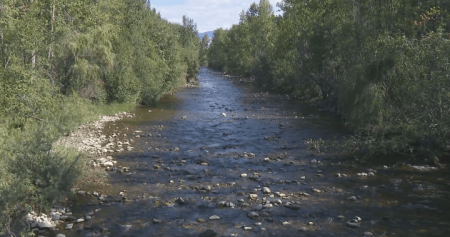An Edmonton couple, Jennifer Yeoman and Hector Lomack, made a fascinating discovery last year while landscaping their yard – a 4.6-pound chunk of obsidian core, a type of volcanic glass not commonly found in Alberta due to the lack of volcanoes in the region. Yeoman, who had always dreamt of being an archaeologist, brought the rock to the Royal Alberta Museum for further investigation. The museum’s archaeology team identified distinctive characteristics on the rock that suggested it was human-made and used for making tools like arrowheads. By analyzing the chemical composition of the obsidian, they were able to trace it back to a volcano in southern Idaho that was used by Indigenous people in pre-contact times.
The discovery of the obsidian core has sparked excitement as it may provide insights into the raw material preferences and trade networks of pre-contact Indigenous communities in Alberta. However, further investigation is needed to confirm the authenticity of the artifact. The museum turned to their social media community for input, and received responses suggesting that the obsidian core could potentially be a replica created by a flintknapper for experimental archaeology. In order to solve the mystery, the RAM archaeology team plans to return to Yeoman’s yard and excavate the area to look for more clues that could help determine the origin and purpose of the obsidian core.
The discovery of the obsidian core has opened up the possibility that Yeoman’s yard could have been a tool-making center for Indigenous peoples, shedding light on the history of the area. Yeoman, who is living her childhood dream of exploring archeology, expressed excitement about the upcoming archaeological dig in her yard. The RAM archaeology team is preparing to turn Yeoman’s yard into an archaeological site to investigate further and potentially uncover more artifacts that could provide valuable information about the past. Yeoman and her husband see this as their last great adventure and are eager to continue exploring and learning about the history of their property.
In order to preserve the integrity of archaeological sites and artifacts, Forsythe advises individuals who find artifacts in the ground to leave them in place, take a picture, mark the location of the item, and contact the museum for further assistance. By working together with the community, museums are able to reconstruct the past and piece together important historical information. The discovery of the obsidian core in Yeoman’s yard highlights the importance of preserving and studying artifacts to gain a better understanding of the history and culture of Indigenous peoples in Alberta. The ongoing investigation into the obsidian core is a testament to the collaborative efforts of researchers, community members, and individuals like Yeoman who are passionate about uncovering the mysteries of the past.













